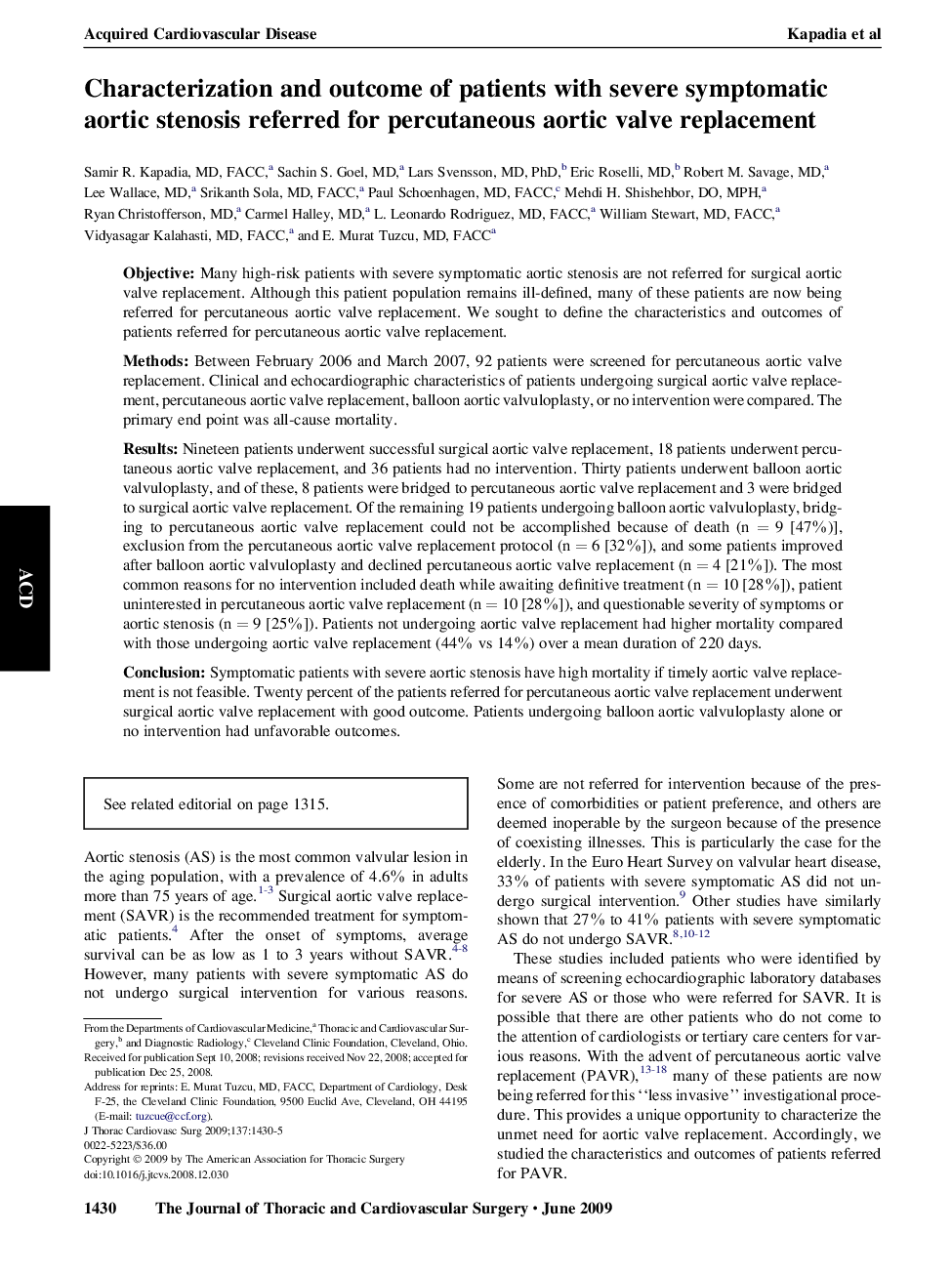| کد مقاله | کد نشریه | سال انتشار | مقاله انگلیسی | نسخه تمام متن |
|---|---|---|---|---|
| 2985484 | 1578673 | 2009 | 6 صفحه PDF | دانلود رایگان |

ObjectiveMany high-risk patients with severe symptomatic aortic stenosis are not referred for surgical aortic valve replacement. Although this patient population remains ill-defined, many of these patients are now being referred for percutaneous aortic valve replacement. We sought to define the characteristics and outcomes of patients referred for percutaneous aortic valve replacement.MethodsBetween February 2006 and March 2007, 92 patients were screened for percutaneous aortic valve replacement. Clinical and echocardiographic characteristics of patients undergoing surgical aortic valve replacement, percutaneous aortic valve replacement, balloon aortic valvuloplasty, or no intervention were compared. The primary end point was all-cause mortality.ResultsNineteen patients underwent successful surgical aortic valve replacement, 18 patients underwent percutaneous aortic valve replacement, and 36 patients had no intervention. Thirty patients underwent balloon aortic valvuloplasty, and of these, 8 patients were bridged to percutaneous aortic valve replacement and 3 were bridged to surgical aortic valve replacement. Of the remaining 19 patients undergoing balloon aortic valvuloplasty, bridging to percutaneous aortic valve replacement could not be accomplished because of death (n = 9 [47%)], exclusion from the percutaneous aortic valve replacement protocol (n = 6 [32%]), and some patients improved after balloon aortic valvuloplasty and declined percutaneous aortic valve replacement (n = 4 [21%]). The most common reasons for no intervention included death while awaiting definitive treatment (n = 10 [28%]), patient uninterested in percutaneous aortic valve replacement (n = 10 [28%]), and questionable severity of symptoms or aortic stenosis (n = 9 [25%]). Patients not undergoing aortic valve replacement had higher mortality compared with those undergoing aortic valve replacement (44% vs 14%) over a mean duration of 220 days.ConclusionSymptomatic patients with severe aortic stenosis have high mortality if timely aortic valve replacement is not feasible. Twenty percent of the patients referred for percutaneous aortic valve replacement underwent surgical aortic valve replacement with good outcome. Patients undergoing balloon aortic valvuloplasty alone or no intervention had unfavorable outcomes.
Journal: The Journal of Thoracic and Cardiovascular Surgery - Volume 137, Issue 6, June 2009, Pages 1430–1435